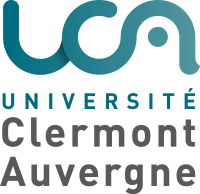Overview
The LPCA is UMR 6533, whose supervisory authorities are the UCA and the CNRS. It is attached to the Rhône-Auvergne CNRS delegation (DR7) and the UCA Institute of Sciences.
The LPCA (Laboratoire de Physique de Clermont Auvergne) is a Joint Research Unit (UMR 6533) under the authority of the Université Clermont Auvergne (UCA) and the Centre National de la Recherche Scientifique (CNRS). Its fundamental research activities are mainly carried out within the framework of a CNRS institute, IN2P3 (Institut National de Physique Nucléaire et de Physique des Particules), whose themes deal with the “two infinites”, the infinitely small and the infinitely large, from the most elementary constituents of matter to cosmology. Multidisciplinary activities exploit the spin-offs of this fundamental research or the methods and technologies used.
Laboratory activities
The unit’s main activity is physics in the field of fundamental interactions (infinitely small and infinitely large), both experimentally, with experiments on particle accelerator or with telescopes, and theoretically. The unit is multidisciplinary, and its activities also extend into the fields of health and the environment, drawing on the laboratory’s expertise in fundamental and instrumental aspects.
The LPCA has four technical development departments (around 50 engineers and technicians) (electronics, microelectronics, mechanics and IT) which make a major contribution to detector design, as well as to innovative technological and software developments. A technical committee coordinates technical resources to meet the needs of scientific project leaders, while a support department handles the laboratory’s financial and administrative management.
Research activities are usually carried out in an international context. They are organized into three research poles. Each of these centers groups together one or more teams. Two poles, one focusing on theoretical aspects, the other on experimental aspects, carry out fundamental research into the structure of matter, fundamental interactions and cosmology. A third pole focuses on applied physics in the fields of health and the environment. This pole brings together the three merging Associate Teams and the original multidisciplinary activities of the pre-merger Corpuscular Physics Laboratory (see history below).
Many members of the laboratory (teacher-researchers as well as researchers and engineers) are involved in student training. The highest level of training is for PhDs, but the laboratory also welcomes trainees from other universities, engineering schools and even high schools. In addition, the laboratory’s teacher-researchers teach in various UCA departments (Bachelor’s, Master’s, IUT).
Communication and the dissemination of scientific information occupy an important place, within different networks of communicators, enabling the pooling of large-scale operations aimed at all audiences and institutional decision-makers.
History of the laboratory
The Laboratoire de Physique Corpusculaire (LPC) was founded in 1959 by Clermont-Ferrand physicists to include nuclear physics in teaching and research at the Faculty of Science of the Université Blaise Pascal (UBP). Research programs soon focused on high-energy physics, first at national facilities such as the Saclay and Orsay accelerators in France, then internationally in the USA, and of course at CERN in Geneva.
As part of the merging of the two universities in Clermont-Ferrand (UBP and Université d’Auvergne forming the UCA), the laboratory and three associated teams – PCSN/C-Biosenss (Physico Chimie des Surfaces Nanostructurées), RGM (Réparation du Génome Mitochondrial) and LAEPT (Laboratoire Arc Electrique et Plasmas Thermiques) – joined forces to form, on January 1, 2017, the Laboratoire de Physique de Clermont, keeping its acronym. On January 1, 2024, the LPC became the LPCA, adding “Auvergne” to its name.
The merged laboratory had research premises spread over 2 sites (at the biology cluster and the physics cluster) on the Cézeaux campus in Aubière. Since July 2019, a building has been redeveloped to accommodate the laboratory’s staff in a single complex covering 3600 m2 at the physics pole. Staff from the PCSN/C-Biosenss team have their own premises at the Clermont IUT, which manages them. The same applies to staff working at the Montluçon IUT.







